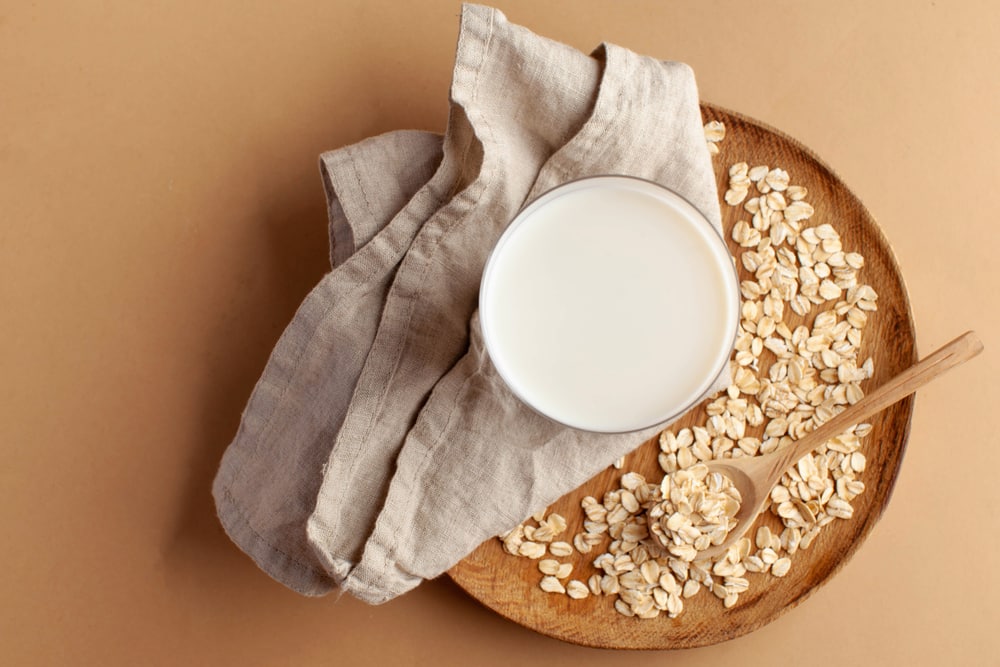
People who have a lactose-intolerance often have no choice but to stop drinking milk, which deprives them of essential nutrients. However, there are various non-dairy milk options available in the market, including oat milk. It’s an apt choice for people who don’t mind plant-based milk and like the nutty flavor of the milk. So, if you are ready to start drinking oat milk, let’s check out the barista oat milk vs. regular oat milk comparison because these two have different textures and taste profiles!
Regular Oat Milk vs. Barista Oat Milk
Regular Oat Milk
Regular oat milk is basically plant-based milk that’s derived from whole oat gains and is known for its creamy texture. It has mild hints of oatmeal flavor and is available in a variety of flavors, including chocolate and vanilla. The regular oat milk is available in sweetened as well as unsweetened forms, making it suitable for everyone. It’s a great way of replacing dairy if you follow a vegan diet or cannot process milk due to allergies and lactose intolerance.
Regular oat milk is also a more eco-friendly choice as it has a lower environmental impact as oats need less water and land for production. It is made by soaking the oats while chemical catalysts are added to increase the mixture’s pH level. When the liquid starts getting separated, more minerals, flavorings, fortifying vitamins, oils, and salts are added to improve the flavor and nutritional profile. Regular oat milk is a great source of vitamin A, iron, and calcium as well.
In most cases, the regular oat milk has a longer shelf life as milk is passed through the UHT and pasteurization treatments. As far as the production is concerned, it’s made from whole-grain oats or steel-cut oats. When it comes down to the nutritional profile, one cup of regular oat milk has around 120 calories, 5g of fat, 2g of fiber, 16g of carbs, 7g of sugar, and 3g of protein. In addition, it has 25% vitamin D, which makes it one of the healthiest milk varieties out there.
Regular oat milk doesn’t create froth as compared to barista oat milk that’s formulated for making coffee, hence creating froth. In addition, it has a thinner consistency, but there is a certain creaminess in the flavor. For this reason, you can drink it on its own or add it to baked goods, creamy soups, and smoothies. Moreover, it can be added to waffles and pancake batter if you are looking for a healthier liquid.
Barista Oat Milk
As the name indicates, the barista oat milk is specially formulated to make coffees and other milk-based beverages for people who cannot consume regular milk. It’s a great way of upgrading the coffee latte as it froths, steams, and foams perfectly for every type of coffee. In addition, it can be added to iced coffee and hot coffee without any special technique to ensure smooth mixing, resulting in a creamy and smooth cup of coffee.
The barista oat milk usually has sea salt and additional minerals like phosphate and calcium carbonate, which actually help create the froth. The barista’s oat milk is known to have seven times less water as compared to regular oat milk and cow’s milk to make sure the coffee turns out thick, rich, and creamy. The coffees made from barista oat milk have a creamy and rich mouthfeel. The oat milk itself has a neutral flavor to make sure the coffee flavors are defined.
There are no preservatives and artificial ingredients in the barista oat milk, and yet it guarantees the frothy goodness. It has an extremely mild sweet undertone, which is added by the breakdown of oats, which is okay (it won’t interfere with the flavor of your beverage). In addition, the barista’s oat milk is 100% vegan and free from GMOs, promising a healthier experience.
When it comes down to production, it’s made from gluten-free and whole rolled oats, but it often varies with the brand, so always read the label to make sure you are getting the right variety (some brands also use liquid oats to make barista oat milk). Usually, the barista oat milk made from liquid oats is recommended for people with digestion issues as it’s not heavy on the stomach and still produces enough foam, so it’s a win-win!